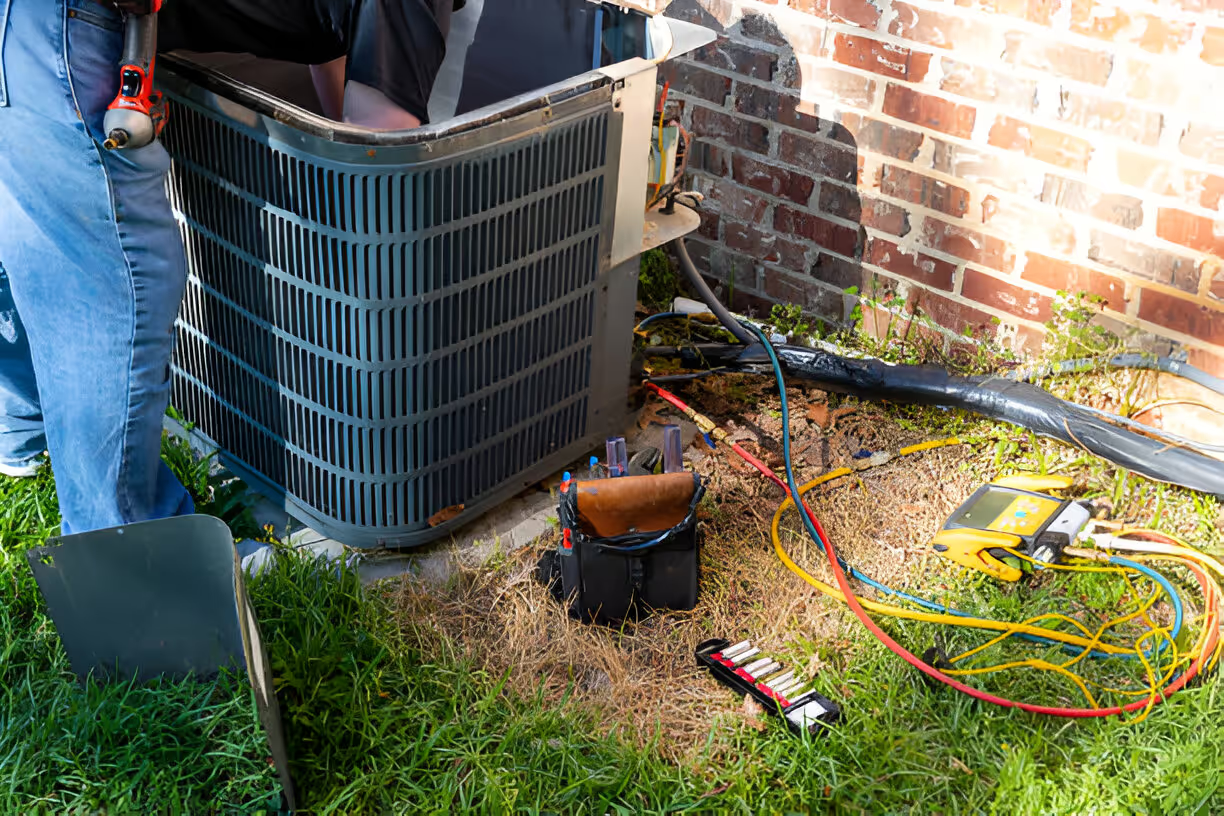Residential Air Conditioner in Queen Creek, AZ
A reliable residential air conditioner is essential for comfort and safety in Queen Creek, AZ, where long, hot summers and seasonal monsoons put heavy demand on home cooling systems. Whether you need a new installation, a right-sized replacement, routine maintenance, or fast repair, understanding the options and what to expect helps you make confident decisions that lower energy use, prevent breakdowns, and extend equipment life.

Common residential air conditioner services in Queen Creek
- AC installation and replacement: Full system installs, coil and condenser swaps, and full-system replacements when units are aged or undersized.
- System sizing and selection: Accurate load calculations and equipment recommendations to match home size and usage patterns.
- Repair services: Diagnostics and repairs for compressor, refrigerant leaks, electrical failures, thermostat and control issues, blower problems, and more.
- Routine maintenance and tune-ups: Seasonal inspections, refrigerant checks, coil cleaning, filter replacement guidance, and safety testing.
- Ductless mini-split expertise: Design, installation, and servicing of ductless systems for additions, garages, or zoned comfort.
- Warranty guidance and financing options: Explanation of manufacturer and labor warranties, and available financing or payment plans for larger projects.
Why proper sizing and system selection matters in Queen Creek
Homes in Queen Creek face extreme daytime temperatures in summer months and occasionally high humidity during monsoon season. Oversized or undersized systems create problems:
- Oversized units short-cycle (turn on and off frequently), which reduces dehumidification, increases wear, and raises utility costs.
- Undersized units run constantly and may never reach target temperatures on the hottest days.
A professional Manual J load calculation is the industry standard to determine correct capacity. Beyond tonnage, consider:
- SEER rating for efficiency (higher SEER is better for long-term energy savings)
- Proper refrigerant type (newer systems use R-410A or other current refrigerants; older R-22 systems are phased out)
- Duct condition and insulation — leaky ducts common in older builds reduce performance
Typical installation process
- Site assessment and load calculation to choose capacity and model.
- Permitting if required by local codes in Queen Creek.
- Removal of old equipment and preparation of pad/condenser location with attention to airflow and dust exposure.
- Refrigerant charging, electrical hookups, and duct connections or mini-split line sets.
- System startup, thermostat setup, and a complete performance check.
- Walk-through explaining new features, warranty coverage, and recommended maintenance schedule.
Expect technicians to size the system for your home’s layout, insulation, and lifestyle — not just the square footage.
Repair and maintenance: common Queen Creek AC issues and solutions
Queen Creek’s desert conditions lead to a predictable set of AC problems:
- Clogged air filters and dirty coils from dust and seasonal dust storms reduce airflow and efficiency. Regular filter changes and coil cleaning restore performance.
- Condenser issues: Outdoor units can overheat when airflow is blocked by debris or nearby landscaping. Keep at least 2–3 feet of clearance.
- Refrigerant leaks: Low refrigerant causes poor cooling and higher run times. Technicians locate and repair leaks, then recharge per manufacturer specs.
- Compressor failure: High heat and extended run times increase stress on compressors. Timely maintenance reduces risk.
- Short cycling or frequent tripping: Often caused by oversized units, low refrigerant, thermostat faults, or electrical issues.
- Drain line clogs: Trapped debris or biological growth during humid periods causes water backups and potential indoor damage.
Recommended maintenance schedule:
- Spring pre-season tune-up: clean coils, check refrigerant, inspect electricals, lubricate moving parts, test safety controls.
- Mid-season filter checks: more frequent during dust storms or if pets are in the home.
- Post-monsoon check: clear drain lines and inspect for moisture-related issues.
Ductless mini-split expertise for flexible cooling
Ductless mini-splits are excellent for:
- Additions, garages, converted rooms, or older homes without ducts
- Zoned temperature control to save energy by cooling only occupied spaces
- High-efficiency operation in hot climates when properly sized and installed
Benefits include minimal invasive installation, improved indoor air quality (with multi-stage filtration options), and the ability to expand zones over time. Proper placement and professional line-set work are crucial to performance in Queen Creek’s heat.
Warranties and financing explained
Residential systems typically include multiple warranty layers:
- Manufacturer parts and compressor warranties: Vary by brand and model; some offer longer coverage for specific components.
- Labor warranty: Covers workmanship for a defined period after installation or repair (common to see 1 year on parts and labor).
- Extended warranties or maintenance plans: May be available to prolong protection and lock in service terms.
Financing options often include installment plans, HVAC-specific loans, or vendor payment arrangements to spread the cost of replacements and major repairs. When evaluating financing, compare terms, interest rates, and whether the warranty is impacted by contractor selection.
What homeowners in Queen Creek can expect during a service call
- Professional arrival in a marked service vehicle within a scheduled window; technicians should be screened and trained.
- A clear explanation of the diagnostic process before work begins and an itemized estimate for any recommended repairs or replacements.
- Safety checks first: electrical disconnects, refrigerant handling, and gas line safety (if applicable).
- Transparent reporting of findings, with photographic documentation of hard-to-see issues when helpful.
- Completion of repairs or a plan for parts and a follow-up appointment if parts are required.
- System start-up and performance verification, including airflow, temperature split, and thermostat calibration.
- Cleanup of the work area and a summary of warranty coverage and recommended next steps for maintenance.
Final considerations
Proactive care and correct system selection are the best defenses against expensive breakdowns in Queen Creek’s demanding climate. A properly sized, well-maintained residential air conditioner improves comfort, reduces humidity during monsoon season, and lowers energy bills over the life of the system. For homeowners considering replacement, ductless zoning, or a maintenance plan, focus on accurate load calculations, reputable warranty coverage, and regular seasonal tune-ups to protect your investment and keep your home comfortable year-round.






